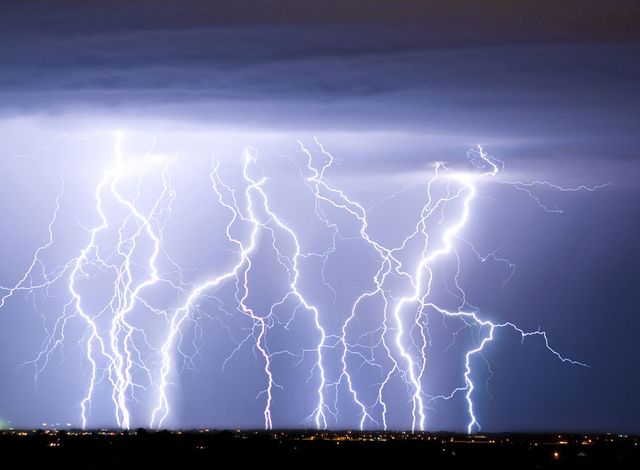
On Wednesday January 2, 42-year-old Irish adventurer Ian McKeever was leading a group of more than 20 people through the lunar landscape section of Mount Kilimanjaro when he was struck by lightning and killed instantly. The Telegraph reported that fellow climber Jack O'Donahue, 60, was hiking just three feet away from McKeever when the bolt knocked him off his feet. Donahue survived. At least six other people on the expedition were treated for injuries, including McKeever's fiance, whom he planned to wed in September 2013.
The Irish Times reported that friends were surprised that McKeever would die from a lightning strike on Kilimanjaro, as he had climbed much more difficult and dangerous terrain. In 2007, he set the speed record for climbing the seven summits, achieving the feat in 156 days. (Vern Tejas now holds the record—he climbed all of the peaks in 136 days.) “I am absolutely shocked to hear about the death of my friend Ian. It was a freak accident and a complete fluke,” Irish explorer Pat Falvey told the Independent. “I have lost two friends in lightning strikes, including one on the Himalayas—but they are very rare on Kilimanjaro.”

Death caused by a lightning strike is an incredibly rare event, but there are some areas in the world where it occurs at a higher rate than others. Central Africa has a greater incidence of lightning strikes than any other large region. (See the large black area in the map above, which is to the west of Kilimanjaro.) Moist airflow from the Atlantic Ocean couples with mountainous terrain and leads to year-round thunderstorms in a location where much of the population is rural, few advanced warning systems exist, medical facilities are often sub-standard, and most buildings are rudimentary. Though there is no definitive overall set of statistics for the region, there is not a shortage of reported strikes. In 2011, 18 children and a teacher were killed in a primary school in Uganda when it was hit by lightning.
Here's a quick breakdown of lightning deaths and injuries, with statistics taken from a study in the September issue of the journal of Wilderness and Environmental Medicine, NOAA, the National Lightning Safety Institute, and a few other scientific studies.
50: Times per second lightning occurs worldwide.
20: Percentage of those instances in which lightning strikes the ground.
24,000: Deaths a year from lightning.
240,000: Injuries a year from lightning.
40: Number of lightning deaths in the United States annually, a number derived from reports made over the past decade. Reported incidences have decreased over the past 50 years as the country has become more urban. About 300 people died per year before the 1940s. At the end of November of 2012, 28 deaths had been reported for the year.
400: Lightning injuries per year in the United States, as
averaged annually over the past decade.
80: Percentage of injuries in the United States that happen to men.
90: Percentage of lightning deaths in the United States that occur between May
and September.
25: Percentage of deaths in the United States that occur in two
states, Florida and Texas.
1 IN 10,000: Chance of being struck by
lightning in the United States during a lifespan of 80 years.
0.3: Estimated death rate per 1,000,000 people per year from lightning in developed nations.
6: Estimated death rate per 1,000,000 people per year from lightning in developing nations.
84: Estimated death rate per 1,000,000 people per year from lightning in the Nkhata Bay District of Malawi, the highest known rate in the world.
—Joe Spring
@joespring
facebook.com/joespring.1